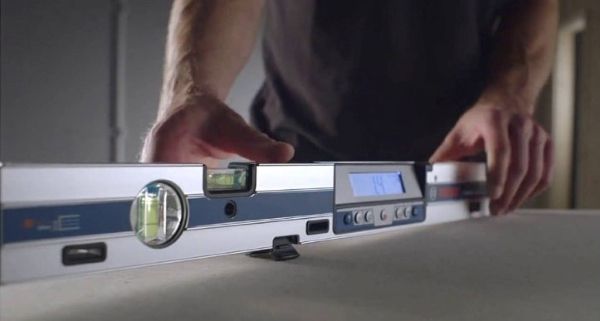How is the measuring tape used correctly?
Have you ever wondered how to accurately measure the slope, inclination and angle of a building while still ensuring aesthetics? With the water level widely used in architecture and interior design, it has become an indispensable tool in every measurement stage. Based on practical experience and a deep understanding of customer needs, the following article will share how to use the water level correctly, helping to overcome common difficulties when measuring.
Contents
Overview of spirit level
The level is known by other names such as level, livo or balance, which can be seen a lot in the mechanical field. This tool helps to check the inclination, slope and deviation angles on many types of works, from construction to interior and exterior design.
In the activities of measuring and checking deviation angles at works or during interior construction, people often prefer to use level bars (or straight level) and electronic level (also known as electronic angle measuring ruler). In particular, the line of electronic level rulers integrated with laser is always chosen by many technicians and acceptance teams thanks to its outstanding accuracy and convenience.
How to use a spirit level correctly
Since the level rod is the most commonly used type, in this guide, EMIN will focus on how to use a straight level. For other types of levels such as frame levels or electronic levels, the principles of use are similar.

Step 1: Place the level rod on the surface to be measured. If the surface is not flat, the glass tube on the ruler will have one end higher, causing the air bubble to move towards the high end.
Step 2: Observe the graduations on the ruler body to determine the difference between the two ends.
Step 3: Read the incline measurement result based on the position of the air bubble relative to the graduations.
How to read a water level correctly
When measuring flatness with a spirit level, people usually gradually adjust by inserting the feeler into the gap, continuing to adjust until the air bubble is almost balanced in the middle of the spirit level tube. Then, the deviation result will be determined based on the thickness of the feeler used.
If you want to calculate more accurately, you can apply the following method:
1. Calculate the relative tilt: Assuming the level ruler is 500mm long and has a sensitivity of 0.02mm/m, we calculate as follows:
- 0.02 x 2 = 0.04mm, meaning that in 1 meter, the difference between the two edges will be 0.04mm.
2. Calculate the absolute tilt:
- 0.04 x 0.5 = 0.02mm, meaning that the actual difference on a 500mm long ruler will be 0.02mm.
Refer to the products of the Water ruler at: https://emin.vn/thiet-bi-do-co-khi-nivo-level-do-goc-va-do-thang-nivo-level-thuoc-thuy-155/pc.html?srsltid=AfmBOoqR-zDnFyDicCJ-Pp0urdu9KKsE10LJ7KFa21ZsoR0NBHA6_t8u
Notes when using a spirit level to ensure durability and accuracy
- Each type of level has a different design, so always read the accompanying instructions carefully to ensure correct operation, avoiding errors that affect the accuracy of the device.
- Avoid dropping the level on a hard surface, as strong impact can damage the water tube or affect the accuracy of the measurement.
- Although some models are water-resistant, you should still limit water contact with the level, especially the electronic components inside.
- If using an electronic level, turn it off when not in use to save battery. If not used for a long time, remove the battery to avoid leakage and damage.
- After each use, clean the level, store in a dry, cool place, avoid areas with high temperature and humidity to prolong the life of the device.
Hopefully with the above notes, you will use the level correctly and achieve the desired accurate measurement results.